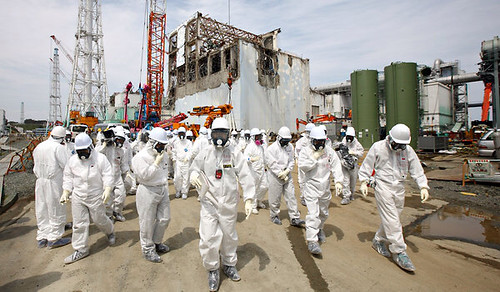TOKYO — What passes for normal at the Fukushima Daiichi plant today would have caused shudders among even the most sanguine of experts before an earthquake and tsunami set off the world’s second most serious nuclear crisis after Chernobyl.
Fourteen months after the accident, a pool brimming with used fuel rods and filled with vast quantities of radioactive cesium still sits on the top floor of a heavily damaged reactor building, covered only with plastic.
The public’s fears about the pool have grown in recent months as some scientists have warned that it has the most potential for setting off a new catastrophe, now that the three nuclear reactors that suffered meltdowns are in a more stable state, and as frequent quakes continue to rattle the region.
The worries picked up new traction in recent days after the operator of the plant, Tokyo Electric Power Company, or Tepco, said it had found a slight bulge in one of the walls of the reactor building, stoking fears over the building’s safety.
To try to quell such worries, the government sent the environment and nuclear minister to the plant on Saturday, where he climbed a makeshift staircase in protective garb to look at the structure supporting the pool, which he said appeared sound. The minister, Goshi Hosono, added that although the government accepted Tepco’s assurances that reinforcement work had shored up the building, it ordered the company to conduct further studies because of the bulge.
Some outside experts have also worked to allay fears, saying that the fuel in the pool is now so old that it cannot generate enough heat to start the kind of accident that would allow radioactive material to escape.
But many Japanese scoff at those assurances and point out that even if the building is strong enough, which they question, the jury-rigged cooling system for the pool has already malfunctioned several times, including a 24-hour failure in April. Had the outages continued, they would have left the rods at risk of dangerous overheating. Government critics are especially concerned, since Tepco has said the soonest it could begin emptying the pool is late 2013, dashing hopes for earlier action.
“The No. 4 reactor is visibly damaged and in a fragile state, down to the floor that holds the spent fuel pool,” said Hiroaki Koide, an assistant professor at Kyoto University’s Research Reactor Institute and one of the experts raising concerns. “Any radioactive release could be huge and go directly into the environment.” More
